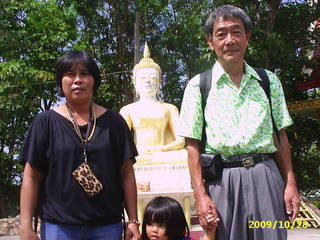2016年02月28日
高浜再稼働 後始末をどうするのか
--The Asahi Shimbun, Feb. 27
EDITORIAL: Dealing with nuclear waste a pressing concern with Takahama reactor restart
(社説)高浜再稼働 後始末をどうするのか
Kansai Electric Power Co. restarted the No. 4 reactor at its Takahama nuclear power plant in Fukui Prefecture on Feb. 26.
福井県の関西電力高浜原発4号機が再稼働した。
The 870-megawatt pressurized water reactor became the fourth to resume operations since stricter safety guidelines were introduced after the 2011 Fukushima nuclear disaster triggered by the Great East Japan Earthquake and tsunami.
The No. 1 and No. 2 reactors at Kyushu Electric Power Co.’s Sendai nuclear power plant in Kagoshima Prefecture, as well as the No. 3 reactor at the Takahama facility, had already been brought back online.
東日本大震災後、新しい規制基準のもとでは九州電力川内原発1、2号機(鹿児島県)、高浜3号機に続き4基目だ。
The No. 4 reactor at the Takahama plant, like the No. 3 reactor, uses mixed-oxide (MOX) fuel consisting of plutonium and uranium to generate electricity.
高浜4号機は3号機と同様、ウランとプルトニウムの混合酸化物(MOX)燃料を使うプルサーマル発電が実施される。
What concerns us is whether local residents will be safely and smoothly evacuated in the event of a severe accident at the plant. The decision to resume operations is highly questionable in light of the lessons learned from the calamitous accident at the Fukushima No. 1 nuclear power plant.
事故時に住民がスムーズに避難できるかという課題は積み残されたままだ。東京電力福島第一原発事故の教訓を踏まえた再稼働とはとうてい言えない。
Earlier this month, a small amount of radioactive water was found to have leaked near purification equipment installed in the auxiliary structure of the No. 4 reactor building during a test to send water down the primary coolant pipe connected to the reactor.
4号機では、稼働準備中に微量の放射性物質を含む水漏れが起きた。
The cause of the leak was a loose bolt in a valve, according to the utility.
配管の弁のボルトが緩んでいたという。
The triple meltdown at the Fukushima plant five years ago has made Japanese far more aware of safety concerns when it comes to nuclear power generation.
福島原発事故後、安全性への国民の視線は格段に厳しくなった。
Kansai Electric claims it has checked all other valves. Even so, the utility must realize it is assuming a heavy responsibility with regard to the overall safety of the reactor it has restarted.
関電は他の弁の点検もしたというが、動かす以上、重い責任を負うことにいま一度自覚を求めたい。
Operating a reactor inevitably produces additional spent nuclear fuel. What is needed now is a fresh, hard look at the intractable challenge of what to do with nuclear waste.
原発を動かせば使用済み核燃料が増える。再稼働を機にこの後始末の問題を直視すべきだ。
At Kansai Electric’s Takahama, Mihama and Oi nuclear plants, about 70 percent of the capacity of the spent fuel pools is already in use. If all nine reactors at these plants are brought back on stream, the storage pools will reach their capacity limit in seven to eight years.
関電の高浜、美浜、大飯原発では使用済み燃料を入れるプールがほぼ7割埋まっている。全9基の原子炉を再稼働すれば7〜8年で満杯になる計算だ。
Under the government’s nuclear fuel recycling program, spent fuel is supposed to be reprocessed at a special plant in Rokkasho, Aomori Prefecture, to separate plutonium for fresh use as fuel.
国の方針の核燃料サイクルに沿えば、使用済み燃料は青森県六ケ所村の工場で再処理され、燃料としてよみがえるはずだった。
But the completion of the reprocessing plant has been delayed repeatedly, with no prospect of actual operation.
だが工場は完成延期が続き、実現のめどは立たない。
In addition, spent MOX fuel produced by a reactor burning a mix of uranium and plutonium in plutonium-thermal (pluthermal) operations cannot be reprocessed at the Rokkasho plant.
しかも、プルサーマルで生じる使用済みMOX燃料は六ケ所の工場で再処理できない。
Since the government has made no decision with regard to the disposal of spent fuel, the utility can only store used MOX within the plant, at least for the time being.
国は方針を決めておらず、当面は原発内で保管するしかない。
The consequences of postponing a decision on how to tackle these vital problems are now making themselves felt.
これらの問題を先送りしてきたツケが、噴き出している。
Consumers, for their part, have long taken for granted that atomic energy will generate much of the electricity they consume. They should not simply foist the responsibility for dealing with the problems on the government or the utilities.
原発に頼ってきた消費者側も、国や電力会社に責任を押しつけて済む話ではない。
Society as a whole needs to show a sense of responsibility by getting involved in debate on the future of nuclear waste disposal in this country.
自分たちの問題として、社会全体で今後の方向性を議論していく必要がある。
People in the Kansai region served by the utility and Fukui Prefecture, where the reactors are located, may be in a position to take the leadership in initiating the debate.
関西と福井とでその先鞭(せんべん)をつけられないか。
Worried about the expected increase in spent nuclear fuel at the plant, the Fukui prefectural government is calling on Kansai Electric and the central government to build an interim storage facility outside the prefecture.
使用済み燃料の増加を懸念した福井県は、中間貯蔵施設を県外につくるよう関電と国に要求している。
Last November, the company promised to decide on the location of such a facility around 2020 and start operating it around 2030.
関電は昨年11月、「20年ごろに場所を決め、30年ごろに操業する」と約束した。
The utility has indicated its intention to build the envisioned storage facility in the Kansai region, which consumes the electricity generated at the plant. But no local government in the region has expressed any willingness to accept such a site.
関電は「消費地の関西に」というが、受け入れに前向きな自治体はない。
This surely is an issue the communities that use the power should tackle.
だが消費地が向き合わなければならない問題だ。
Kansai Electric may as well propose talks over the issue with the Union of Kansai Governments, composed of the governors of the prefectures and the mayors of the ordinance-designated cities in the Kansai region.
関電から関西の知事、政令指定市長が加わる関西広域連合に協議を申し入れてはどうか。
If the Fukui prefectural government is also allowed to sit at the negotiating table, it will be a first step toward mending the relationship between areas where nuclear power plants are located and markets for power generated at the plants. The relationship has been strained by the Fukushima nuclear disaster.
この場に福井県も加われば、福島事故後に対立が深まった消費地と立地地域との関係を結び直す一歩にもなろう。
We realize the talks would not produce any real solution quickly. But it is no longer possible to avoid addressing the issue.
むろんすぐに答えは出まい。だが、議論からもはや逃げられない。
EDITORIAL: Dealing with nuclear waste a pressing concern with Takahama reactor restart
(社説)高浜再稼働 後始末をどうするのか
Kansai Electric Power Co. restarted the No. 4 reactor at its Takahama nuclear power plant in Fukui Prefecture on Feb. 26.
福井県の関西電力高浜原発4号機が再稼働した。
The 870-megawatt pressurized water reactor became the fourth to resume operations since stricter safety guidelines were introduced after the 2011 Fukushima nuclear disaster triggered by the Great East Japan Earthquake and tsunami.
The No. 1 and No. 2 reactors at Kyushu Electric Power Co.’s Sendai nuclear power plant in Kagoshima Prefecture, as well as the No. 3 reactor at the Takahama facility, had already been brought back online.
東日本大震災後、新しい規制基準のもとでは九州電力川内原発1、2号機(鹿児島県)、高浜3号機に続き4基目だ。
The No. 4 reactor at the Takahama plant, like the No. 3 reactor, uses mixed-oxide (MOX) fuel consisting of plutonium and uranium to generate electricity.
高浜4号機は3号機と同様、ウランとプルトニウムの混合酸化物(MOX)燃料を使うプルサーマル発電が実施される。
What concerns us is whether local residents will be safely and smoothly evacuated in the event of a severe accident at the plant. The decision to resume operations is highly questionable in light of the lessons learned from the calamitous accident at the Fukushima No. 1 nuclear power plant.
事故時に住民がスムーズに避難できるかという課題は積み残されたままだ。東京電力福島第一原発事故の教訓を踏まえた再稼働とはとうてい言えない。
Earlier this month, a small amount of radioactive water was found to have leaked near purification equipment installed in the auxiliary structure of the No. 4 reactor building during a test to send water down the primary coolant pipe connected to the reactor.
4号機では、稼働準備中に微量の放射性物質を含む水漏れが起きた。
The cause of the leak was a loose bolt in a valve, according to the utility.
配管の弁のボルトが緩んでいたという。
The triple meltdown at the Fukushima plant five years ago has made Japanese far more aware of safety concerns when it comes to nuclear power generation.
福島原発事故後、安全性への国民の視線は格段に厳しくなった。
Kansai Electric claims it has checked all other valves. Even so, the utility must realize it is assuming a heavy responsibility with regard to the overall safety of the reactor it has restarted.
関電は他の弁の点検もしたというが、動かす以上、重い責任を負うことにいま一度自覚を求めたい。
Operating a reactor inevitably produces additional spent nuclear fuel. What is needed now is a fresh, hard look at the intractable challenge of what to do with nuclear waste.
原発を動かせば使用済み核燃料が増える。再稼働を機にこの後始末の問題を直視すべきだ。
At Kansai Electric’s Takahama, Mihama and Oi nuclear plants, about 70 percent of the capacity of the spent fuel pools is already in use. If all nine reactors at these plants are brought back on stream, the storage pools will reach their capacity limit in seven to eight years.
関電の高浜、美浜、大飯原発では使用済み燃料を入れるプールがほぼ7割埋まっている。全9基の原子炉を再稼働すれば7〜8年で満杯になる計算だ。
Under the government’s nuclear fuel recycling program, spent fuel is supposed to be reprocessed at a special plant in Rokkasho, Aomori Prefecture, to separate plutonium for fresh use as fuel.
国の方針の核燃料サイクルに沿えば、使用済み燃料は青森県六ケ所村の工場で再処理され、燃料としてよみがえるはずだった。
But the completion of the reprocessing plant has been delayed repeatedly, with no prospect of actual operation.
だが工場は完成延期が続き、実現のめどは立たない。
In addition, spent MOX fuel produced by a reactor burning a mix of uranium and plutonium in plutonium-thermal (pluthermal) operations cannot be reprocessed at the Rokkasho plant.
しかも、プルサーマルで生じる使用済みMOX燃料は六ケ所の工場で再処理できない。
Since the government has made no decision with regard to the disposal of spent fuel, the utility can only store used MOX within the plant, at least for the time being.
国は方針を決めておらず、当面は原発内で保管するしかない。
The consequences of postponing a decision on how to tackle these vital problems are now making themselves felt.
これらの問題を先送りしてきたツケが、噴き出している。
Consumers, for their part, have long taken for granted that atomic energy will generate much of the electricity they consume. They should not simply foist the responsibility for dealing with the problems on the government or the utilities.
原発に頼ってきた消費者側も、国や電力会社に責任を押しつけて済む話ではない。
Society as a whole needs to show a sense of responsibility by getting involved in debate on the future of nuclear waste disposal in this country.
自分たちの問題として、社会全体で今後の方向性を議論していく必要がある。
People in the Kansai region served by the utility and Fukui Prefecture, where the reactors are located, may be in a position to take the leadership in initiating the debate.
関西と福井とでその先鞭(せんべん)をつけられないか。
Worried about the expected increase in spent nuclear fuel at the plant, the Fukui prefectural government is calling on Kansai Electric and the central government to build an interim storage facility outside the prefecture.
使用済み燃料の増加を懸念した福井県は、中間貯蔵施設を県外につくるよう関電と国に要求している。
Last November, the company promised to decide on the location of such a facility around 2020 and start operating it around 2030.
関電は昨年11月、「20年ごろに場所を決め、30年ごろに操業する」と約束した。
The utility has indicated its intention to build the envisioned storage facility in the Kansai region, which consumes the electricity generated at the plant. But no local government in the region has expressed any willingness to accept such a site.
関電は「消費地の関西に」というが、受け入れに前向きな自治体はない。
This surely is an issue the communities that use the power should tackle.
だが消費地が向き合わなければならない問題だ。
Kansai Electric may as well propose talks over the issue with the Union of Kansai Governments, composed of the governors of the prefectures and the mayors of the ordinance-designated cities in the Kansai region.
関電から関西の知事、政令指定市長が加わる関西広域連合に協議を申し入れてはどうか。
If the Fukui prefectural government is also allowed to sit at the negotiating table, it will be a first step toward mending the relationship between areas where nuclear power plants are located and markets for power generated at the plants. The relationship has been strained by the Fukushima nuclear disaster.
この場に福井県も加われば、福島事故後に対立が深まった消費地と立地地域との関係を結び直す一歩にもなろう。
We realize the talks would not produce any real solution quickly. But it is no longer possible to avoid addressing the issue.
むろんすぐに答えは出まい。だが、議論からもはや逃げられない。
【このカテゴリーの最新記事】
-
no image
-
no image
-
no image
-
no image
-
no image
この記事へのコメント
コメントを書く





